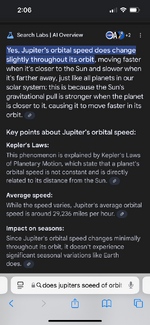I don't see where the difference between where the planet was and where it is now has to do with seeing the past.

Tell us you’re joking. Maybe this is the world’s longest-running piece of satirical performance art. You can’t be serious!
It is not the difference between where the planet “was” and “where it is now.” It is the difference between where the planet
appears to be right now,
and where it actually is.
If we saw in real time, then where Mars
appears to be, and where it
actually is, would be IDENTICAL.
But they are NOT identical. And NASA must factor this difference into their trajectory calculations.
When we look at Mars from the earth, we are seeing it as it was some 12.5 minutes ago. It has moved on since then!
Because where Mars APPEARS TO BE, and WHERE IT ACTUALLY is, are not the same, your writer is simply WRONG. Sorry!
Why doesn't it show up as being of such importance when I google it? There are aberrations but not because of this difference in delayed light.
Finding Jupiter or the Southern Cross is easy if you know where to look — and that's easy too once you know how the movement of the Earth affects our view of the sky.

www.abc.net.au
Relativity. Timespace.
The attachment that I added in the previous post is more relevant.
It doesn’t support your contention. There are no physical means by which so called light at the eye/sight can be instantaneous. It's impossible.
You keep saying that DBT, but you don't understand why this works. I am not debating something that is impossible, but it feels that way when you think in terms of travel time. Don't your thoughts go something like this? How can an image be seen without light traveling to our eyes? But if there is no travel time or distance involved (sort of like a mirror image on the retina), seeing in real time becomes possible. I hope you consider the author's claim before rejecting it too quickly because he knew what he was talking about.
But you haven't explained the means or mechanisms of instant vision, seeing stars, not how they were when the light we see was radiated, but instantly, how they look in the present moment.
You haven’t explained the means by which such a thing is possible.
There is nothing in science, physics, astrophysics or biology that would permit instant vision/light at the eye.
What I and others have pointed out is supported by physics and biology, how the eye works, its structure and function.
Biology doesn't have an airtight explanation when it comes to the function of the eyes—i.e., images being formed from signals within the brain.
That light is radiated or reflected from objects, and that it has a given speed. Which means that light has a travel time between the moment it was emitted or reflected and the moment it is detected and absorbed by the eye.
There is no denying that light hits the retina, and the optic nerve is the connection between the retina and the brain, but it does not give us a complete or accurate picture of how we see.
The instant vision contention has no such means, and cannot be explained.
Not true. He demonstrated what was going on with the eyes. Just because he didn't show the exact mechanism as to how this occurs doesn't mean he was wrong. Look at the present model. They explained how the eyes work down to every impulse, but if Lessans was right, that would make them wrong in how the eyes function, so what good is a model that is incorrect?
Which means that it is an assertion, not a viable model of vision.
I explained it. I also explained his reasoning as to how we become conditioned, which can only take place when words are projected onto real substance. The words like beautiful and ugly do not correspond with real aspects of the known universe, such as cars, houses, chairs, people, traffic lights, televisions, clothes, etc., which is why they have no corresponding reality, yet this conditioning (which no other sense organ can do) makes it appear as if they do. It's okay if you call this claim an assertion as long as the meaning of this word states that it is used to defend arguments; otherwise, using it to mean there is no evidence whatsoever would be a false accusation.
Assertion
First published Mon Jan 22, 2007; substantive revision Wed Nov 17, 2021
Asserting is the act of claiming that something is the case—for instance,
that oranges are citruses, or
that there is a traffic congestion on Brooklyn Bridge (at some time).
We make assertions to share information, coordinate our actions, defend arguments, and communicate our beliefs and desires. Because of its central role in communication, assertion has been investigated in several disciplines. Linguists, philosophers of language, and logicians rely heavily on the notion of assertion in theorizing about meaning, truth and inference.



